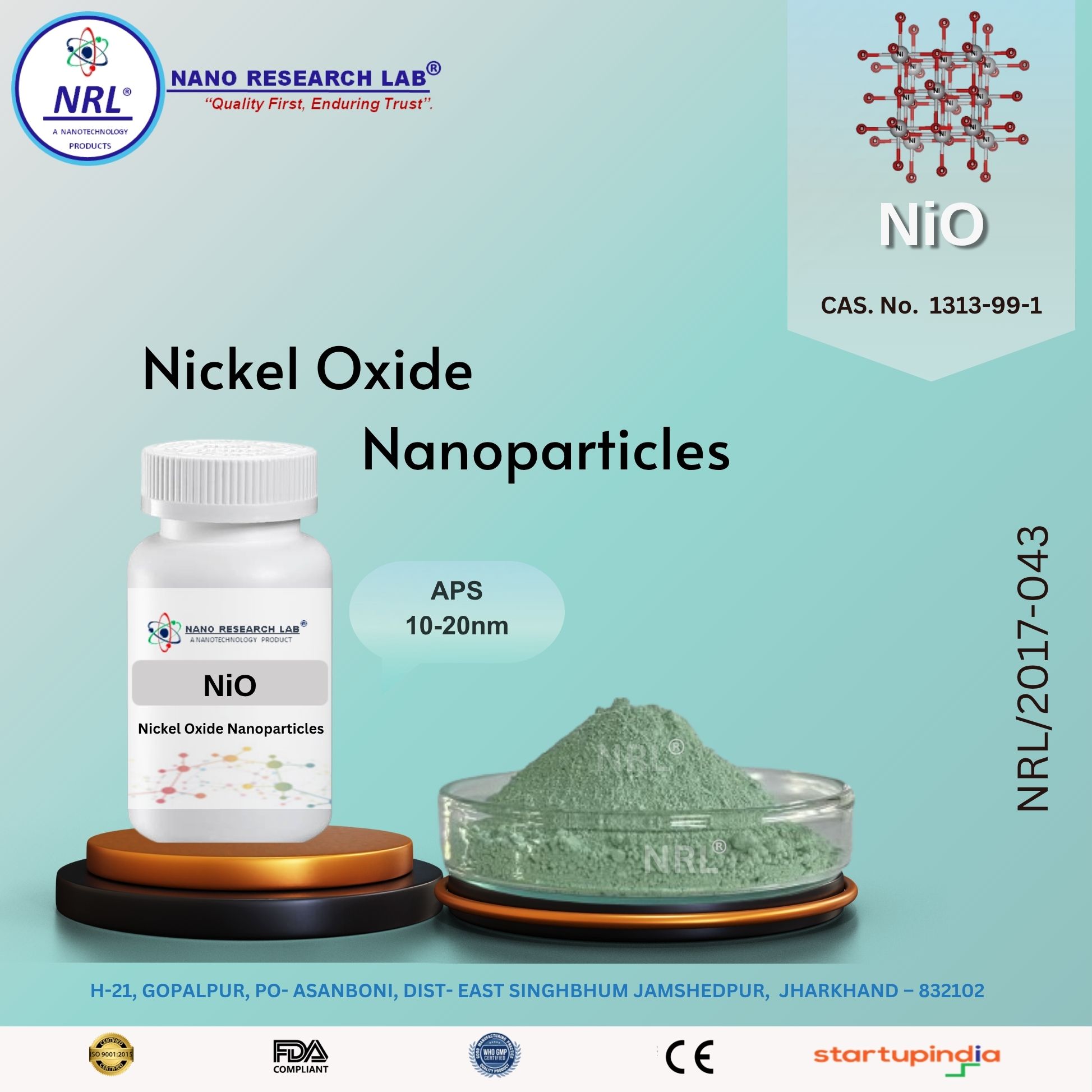
Nickel Oxide Nanopowder/Nanopowder (NiO, 10-20nm, 99.5%)
₹1475.00
Nickel Oxide Nanopowder (NiO, 10–20 nm, Purity 99.5%)
Technical Specifications
Property | Specification |
|---|---|
Chemical Name | Nickel(II) Oxide (NiO) |
CAS Number | 1313-99-1 |
Molecular Weight | 74.69 g/mol |
Purity | ≥ 99.5% |
Appearance / Color | Green Fine Powder |
Particle Size (Average) | 10–20 nm |
Morphology | Nearly Spherical / Irregular |
Crystal Structure | Cubic (Rock Salt) |
Density | 6.67 g/cm³ |
Specific Surface Area (BET) | 50–90 m²/g |
Melting Point | 1955 °C |
Boiling Point | 3600 °C (decomposes) |
Solubility | Insoluble in water; soluble in acids |
pH (in aqueous suspension) | ~7.0 |
Stability | Chemically stable; may slowly oxidize at high temperatures |
Key Features
High Purity (≥ 99.5%) ensures excellent chemical and physical performance.
Ultra-fine Nanoparticle Size (10–20 nm): Provides high surface area and enhanced reactivity.
Cubic Crystal Structure: Ensures consistent physical and chemical properties.
Green Fine Powder: Easy to handle, disperse, and process.
Thermally Stable: Suitable for high-temperature applications.
Uniform Morphology: Promotes homogeneous dispersion in matrices and composites.
Redox Active: Useful in catalysis and electrochemical applications.
Applications
1. Catalysis:
Used as a catalyst or catalyst support in oxidation and hydrogenation reactions.
Applied in fuel cells and chemical manufacturing processes.
2. Batteries & Energy Storage:
Functions as electrode material in lithium-ion, nickel-metal hydride (NiMH), and other battery systems.
Enhances charge/discharge efficiency due to nanoscale size.
3. Electronics & Sensors:
Used in gas sensors, electrochemical sensors, and electronic ceramics.
Employed in conductive coatings and thin films.
4. Ceramics & Glass:
Serves as a component in ceramics, glass, and refractory materials.
Improves thermal stability and color in ceramic applications.
5. Nanotechnology & Research:
Suitable for nanocomposite preparation, magnetic studies, and advanced material research.
6. Environmental Applications:
Used in pollutant degradation, wastewater treatment, and photocatalysis studies.
